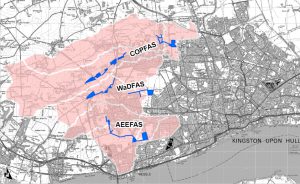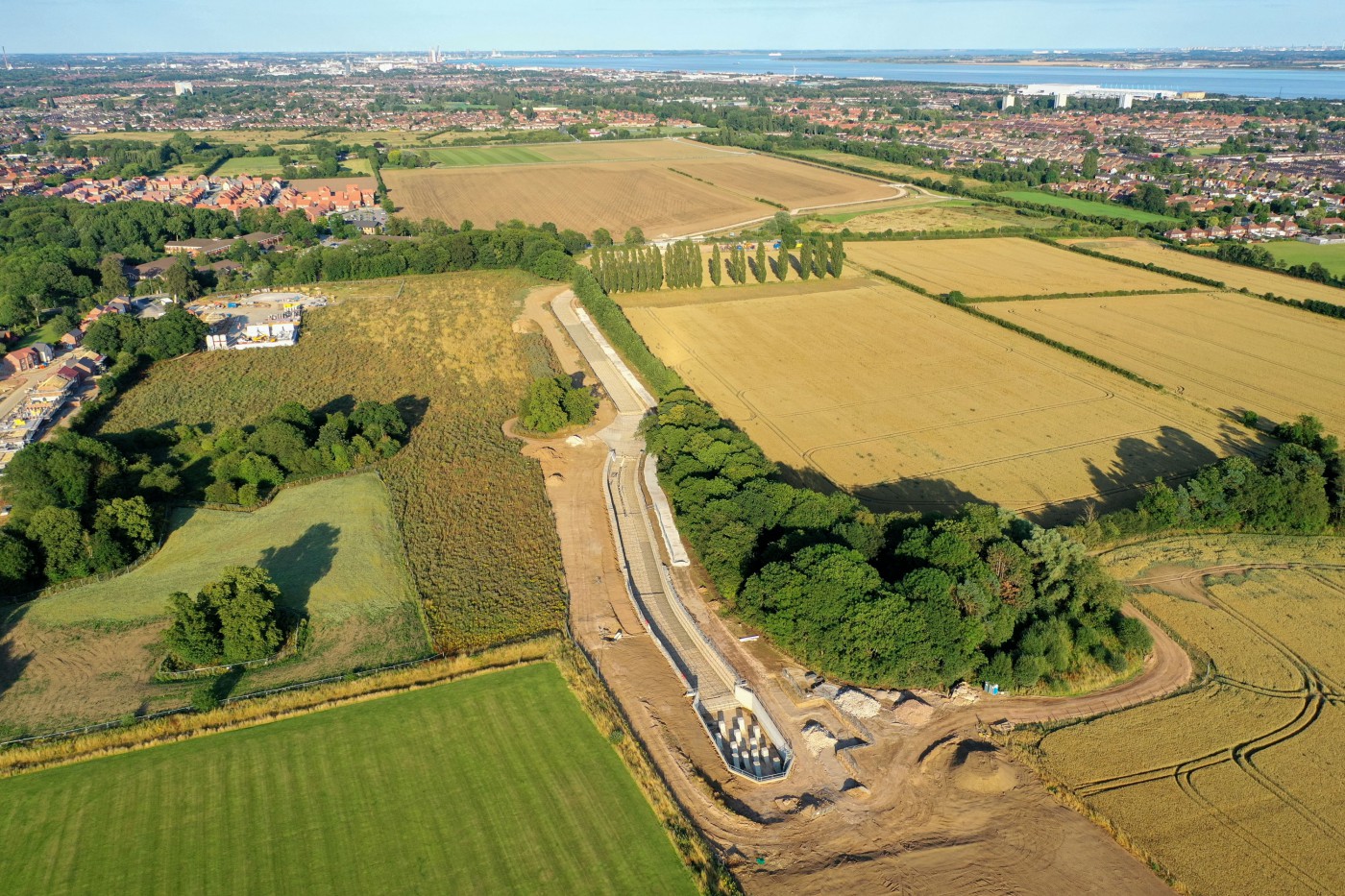On the 25 June 2007 the City of Hull and the East Riding of Yorkshire suffered a devastating flooding event. A months’ worth of rainfall fell in a day overwhelming flood defence mechanisms and drainage networks, flooding the highway network and causing traffic chaos. At the end of the flooding event a total of 17,000 homes and some 35,000 people had been affected and sadly one person lost their life. The cost of the repairs was in excess of £200 million with an additional £33 million spent on temporary accommodation costs. The area has also suffered from flooding from numerous lower order rainfall events throughout recent history.

Model representation of June 2007 event
This scheme features highly in the public’s interest, with so many households having suffered from flooding and its consequences relatively recently. Public engagement together with the involvement of numerous stakeholders has been of paramount importance in delivering this successful project.
The AEEFAS is one of three schemes designed to control pluvial flood flows heading east towards Haltemprice and Hull from the Yorkshire Wolds. The suite of schemes, now nearing completion are the result of 10 years of collaborative working with numerous stakeholders, technical disciplines and contractors. Collectively they reduce pluvial flood risk to circa 16,000 properties, 4,000 of which are attributed to the AEEFAS.

Haltemprice Plivial Flood Alleviation Schemes
The scheme covers some 46.7 hectares and includes a series of overflow spillways and inlet structures to capture flood water and divert it to a new 1.8m diameter, 1,400m long tunnel through the environmentally sensitive source water aquifer and terminates with an energy dissipation unit (EDU) designed to slow the flow of 12m³/s of water exiting the tunnel. This water then flows along a new cobble lined watercourse to join the existing Western Drain. From here, the scheme integrates with the existing Western Drain flood storage reservoir, capable of storing 33,000m³ of flood water. Excess water is then conveyed to a new flood storage reservoir on the site of the former brown field site of the Sydney Smith School, capable of storing an additional 115,000m³. In its entirety, the scheme is designed to cope with a 1 in 75 year return rainfall event, including for climate change, over the next 100 years.
AEEFAS Schematic
The delivery team have had to overcome many challenges in the development of this project; from developing the largest integrated catchment model of its type at the time in order to understand the flooding characteristics and scheme solutions, to tunnelling through the upper layers of Hull’s drinking water aquifer while minimising the risk of pollution to the aquifer.

In order to promote both cost and time efficiencies the project was split into three phases, split geographically. Contractors for each phase were procured through the YORcivil framework, promoting high quality, cost efficiency, considerate construction, community engagement and a focus on engaging local education establishments and apprenticeship schemes through the Framework’s Employment and Skills plan.
The project is substantially complete, within budget and time and with a clean health and safety record, creating a better place to live and work.
Key Achievements
- Reducing the risk of flooding to 4000 properties, a system that was proved to work during the significant storm event of 14th November 2019.
- Delivered safely on time and within budget.
- Winning the RICS Social Impact Awards 2020 for Infrastructure and attaining Project of the Year.


